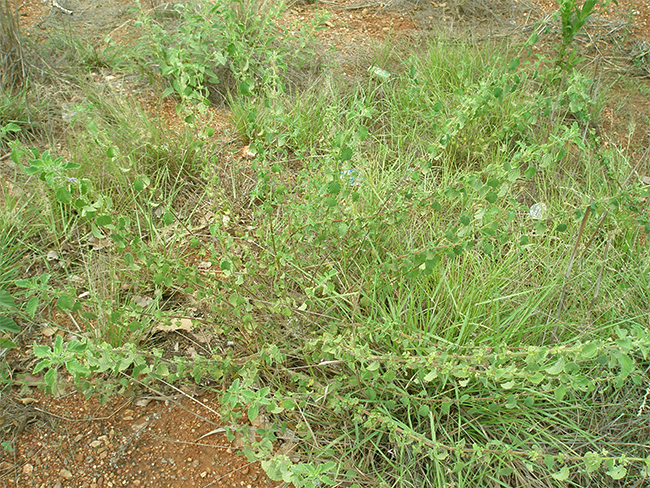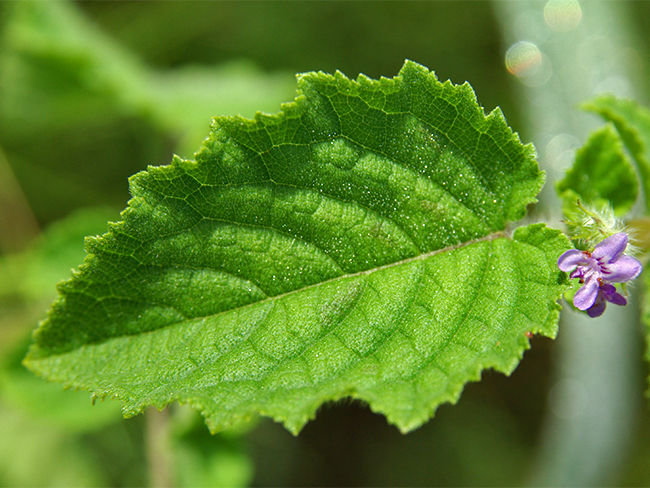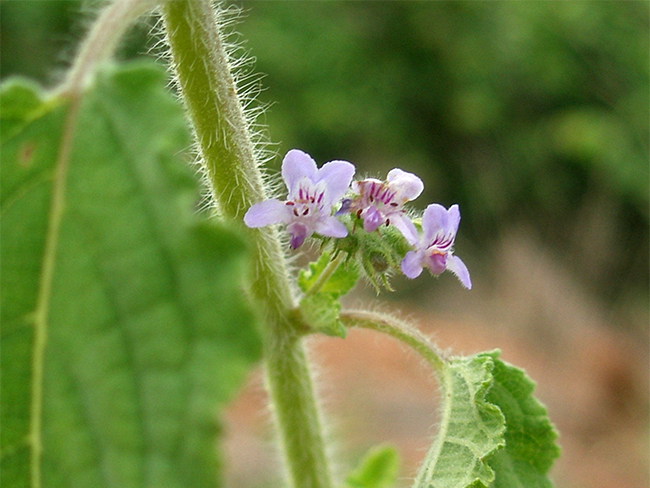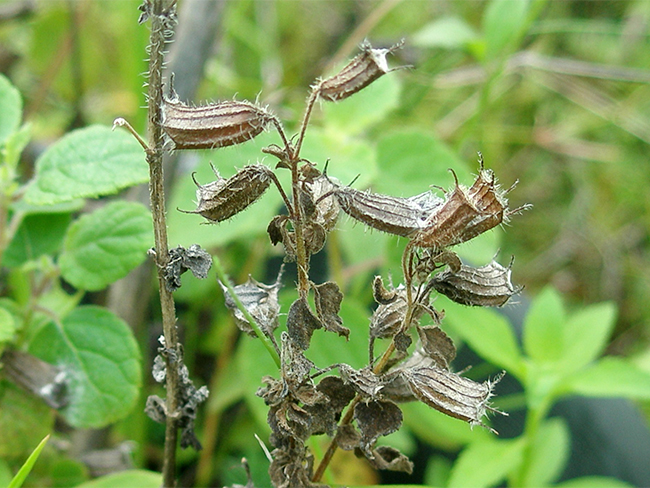Hyptis
Scientific name: Hyptis suaveolens
Declaration status: Class B
Hyptis is native to South America. It was first recorded in the Northern Territory in 1845 by the explorer Leichhardt, indicating it may have been introduced before colonisation.
It is now widespread in the Darwin, Katherine, Gulf and Victoria River districts.
It prefers disturbed areas such as roadsides and overgrazed areas. It will grow on most soil types, except those that become waterlogged.
For more information, get the hyptis identification fact sheet PDF (819.3 KB).
Impact
Hyptis can have all of the following impacts:
- takes over improved and native pastures, especially when overgrazed
- forms dense thickets
- unpalatable to most livestock because of the aromatic oils.
Identification
These features describe the habit of this plant:
- generally grow to 1 to 1.5m in height but can reach 2m
- young plants have green stems covered with fine hairs with square shaped stems
- mature plant stems are unlikely to exceed 0.5cm in diameter with square shaped stems
- hairy, opposite leaves, broad at the base with a pointed tip and toothed margins, size varies from 2.5-7cm long and 1-5cm wide
- small flowers, lavender-blue colour, occur in clusters in the leaf joints
- seed capsule is green but dries to brown, each capsule has 5 stiff bristles
- seeds are dark brown to black, shield-shaped and 3-3.5mm wide
If you are unsure, contact the Weed Management Branch.
Similar looking plants
The following plant species look similar to hyptis:
Knob weed (Hyptis capitata) can be distinguished from hyptis by its white spherical flower head (1.5cm diameter) on 5cm stalks. This is also a weed that should be controlled.
Control
Chemical control
The best time to treat hyptis is from December to March. Below is a list of chemicals and treatment methods that can be used.
| Chemical and concentration | Rate | Situation, method and notes |
|---|---|---|
|
2, 4-D amine 625 g/L Various trade names | 320ml / 100 L |
Seedling or adult (individuals or infestation): Foliar spray - apply when actively growing |
|
Glyphosate 360 g/L Various trade names and formulations | 15ml / 1 L |
Seedling or adult (individuals or infestation): Foliar spray - apply when actively growing |
Non-chemical control
Hand pulling and grubbing
Weeds, including their roots, are physically pulled out of the ground by hand or using hand tools. This is an effective method of control for individual weeds and recent outbreaks that haven’t released seeds yet, but it requires a lot of labour.
Slashing
A brush-cutter, slasher or mower are used to cut weeds off above the ground level. This can be effective in suppressing flower and seed development.
Spread
The small seeds stay in the spined burr/capsule that can be caught and transported by livestock, native animals and clothing. The capsules can float on water and can spread as a contaminant in hay or pasture seed.
Spread prevention
You can prevent the spread of hyptis by doing all of the following:
- map infestations to help develop a management plan
- control minor infestations, isolated outbreaks or seedlings first
- prevent cattle from overgrazing areas as this will create space for hyptis to spread
- designate wash down areas and actively work to prevent contamination of clean areas
- remove and burn new infestations on clean properties
- monitor areas that you have treated and watch for re-infestations.
Give feedback about this page.
Share this page:
URL copied!




